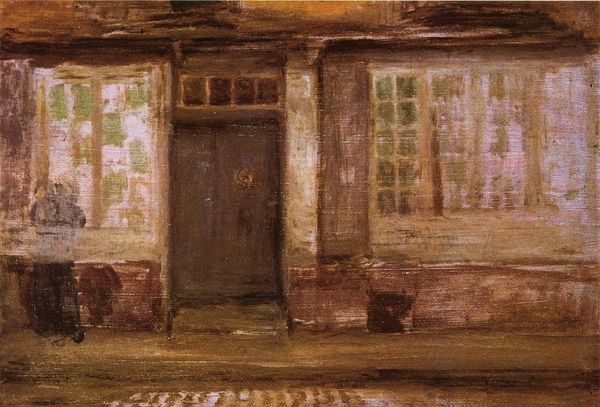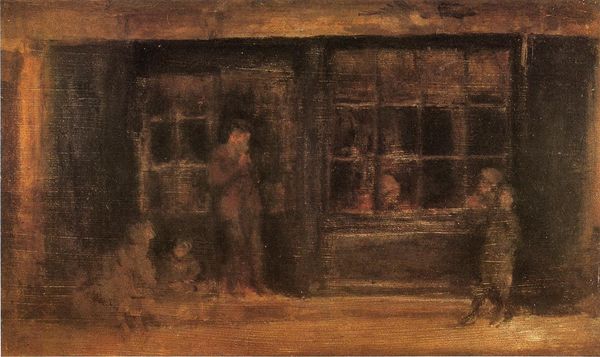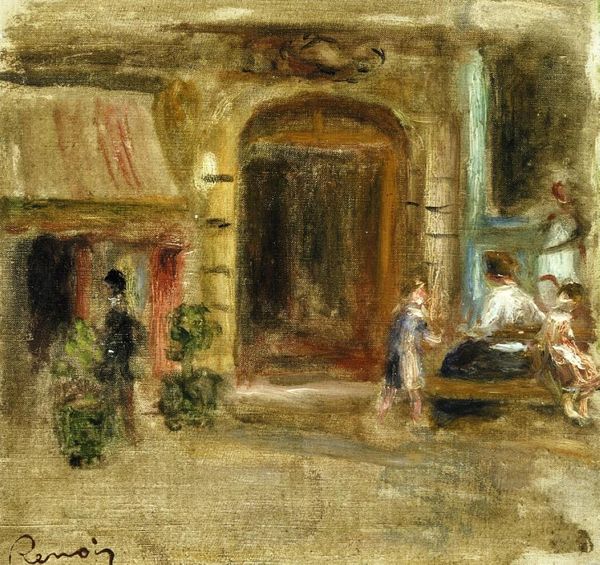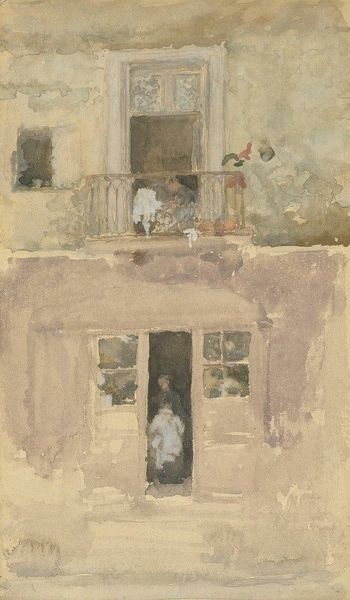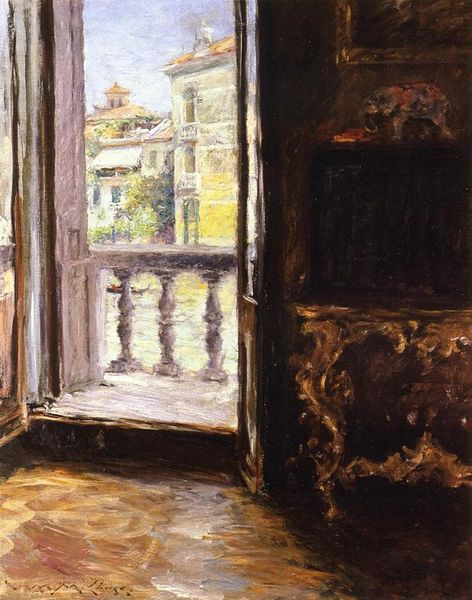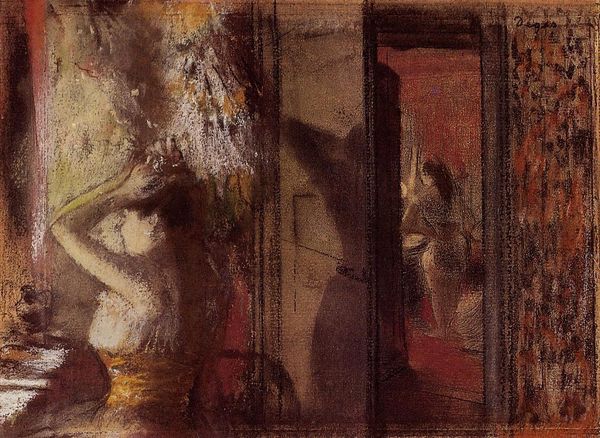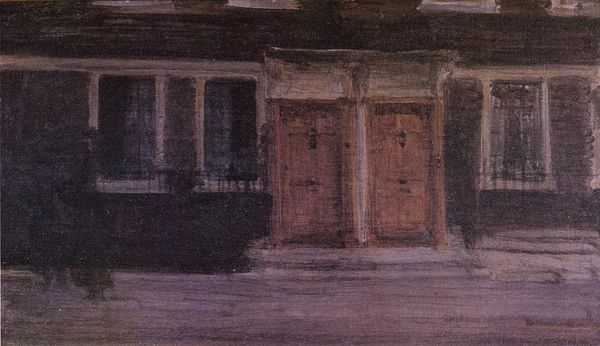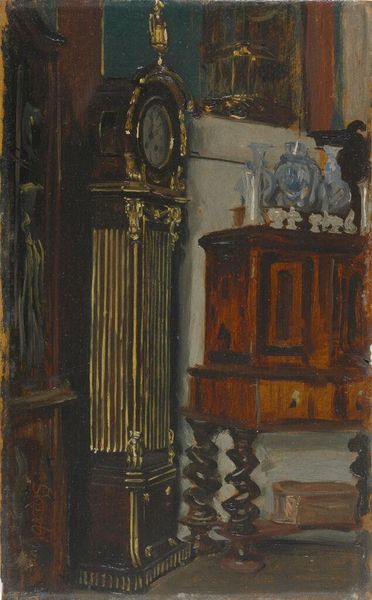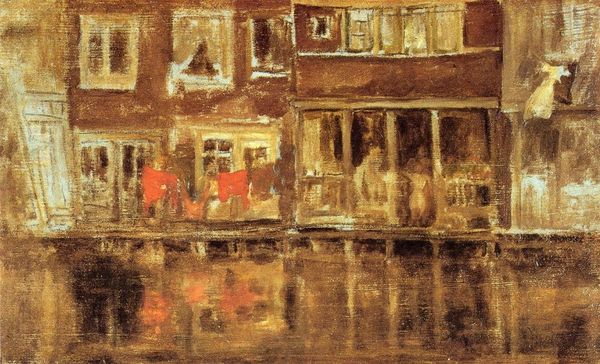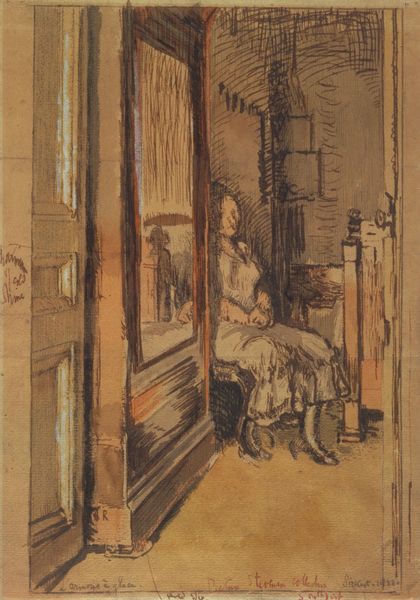
Dimensions: 22.23 x 13.65 cm
Copyright: Public domain
Editor: This is James McNeill Whistler's "A Shop with a Balcony," painted in 1899. It appears to be rendered in oil paint and possibly watercolor, depicting a somewhat blurred cityscape. What's interesting is the way the materials create such a transient, almost dreamlike quality. How do you interpret this work? Curator: As a materialist, I see this work primarily through the lens of its production. The choice of oil and watercolor isn't accidental. The rapid drying time of watercolor allows for capturing immediate impressions, fitting into the late 19th-century fascination with modern, urban life and its inherent ephemerality. How does Whistler use these materials to convey the labor or economic aspects of the shop scene? Editor: It's hard to tell precisely what’s being sold; it feels secondary to the scene's ambiance. You don’t get a sense of labor in a conventional way. Curator: Exactly. But the visible brushstrokes, the blurring – they're all *labor*, Whistler's physical engagement with the materials. He's also implicitly commenting on a changing consumer culture. Shops became aesthetic displays as much as places of necessity. The “shop” is more of a facade than a source of goods. Editor: So the materiality emphasizes the shifting social context around labor and consumerism? The shop becomes part of the overall sensory experience of city life, rather than just a place of business? Curator: Precisely. By foregrounding the material process, Whistler reveals the subtle transformation of urban spaces within the context of emerging capitalism and visual consumption. What's “real” here, the shop or Whistler's artistic mediation? Editor: That's a great point! I hadn't thought about how the medium itself highlights those societal shifts. I see how his particular artistic labor reframes our understanding of daily commerce. Thank you.
Comments
No comments
Be the first to comment and join the conversation on the ultimate creative platform.
